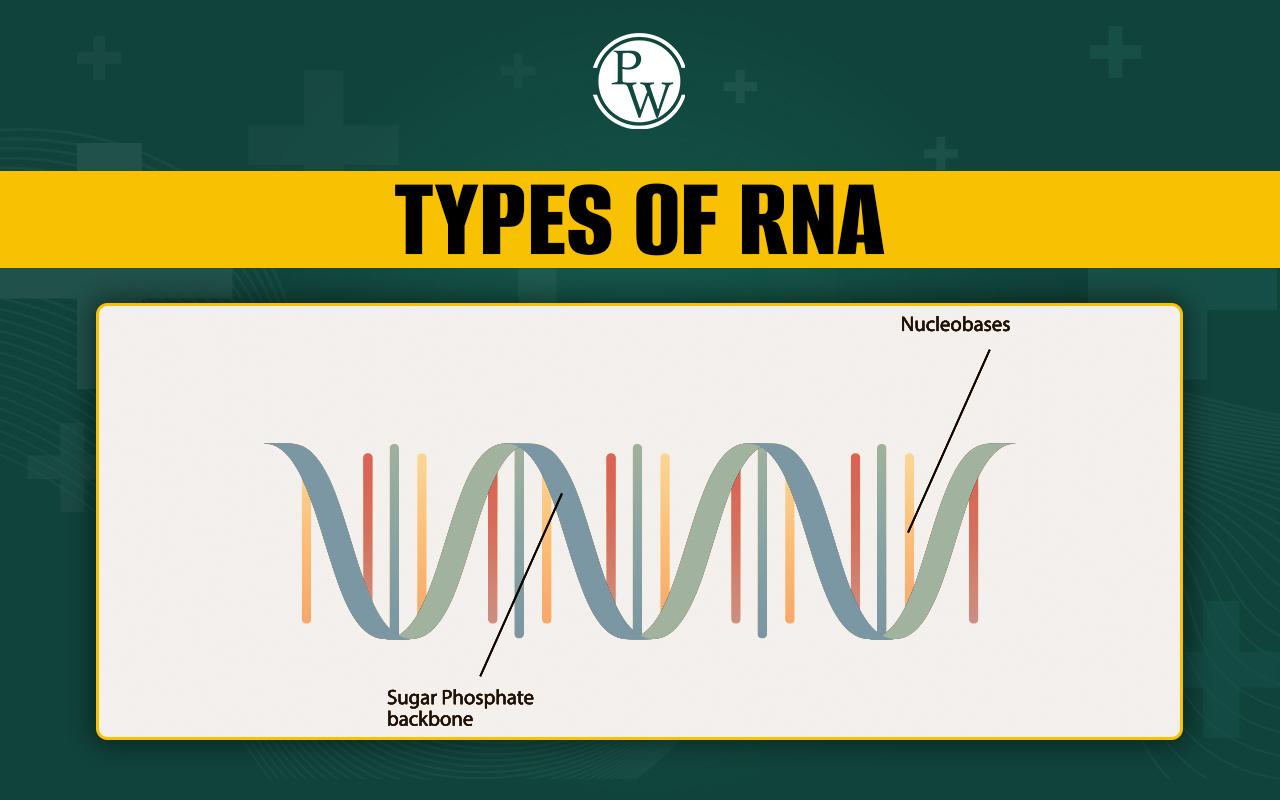

Types of RNA: Ribonucleic Acid (RNA) is an essential molecule that plays a key role in various biological processes, particularly in the synthesis of proteins. Unlike DNA, RNA is single-stranded and contains ribose sugar. It is involved in transferring genetic information, decoding it, and aiding in protein synthesis. RNA molecules exist in different forms, each with unique roles that collectively contribute to the proper functioning of cells. Understanding the types of RNA is fundamental to mastering molecular biology, making it an important topic for the NEET exam .
Types of RNA
RNA exists in several forms, each vital for different stages of protein synthesis and cellular functions. The three primary types of RNA are messenger RNA (mRNA), ribosomal RNA (rRNA), and transfer RNA (tRNA). Each type has specific roles and characteristics.Messenger RNA (mRNA)
mRNA serves as the carrier of genetic information from DNA to the ribosome, where proteins are synthesized. It is transcribed from DNA in the nucleus and carries the genetic code to the cytoplasm. The sequence of nucleotides in mRNA determines the order of amino acids in the protein chain, making it a direct template for protein synthesis.
Ribosomal RNA (rRNA)
rRNA is a structural component of ribosomes, the cellular machinery that assembles proteins. Ribosomes are composed of rRNA and proteins, working together to read the mRNA sequence and facilitate the joining of amino acids. rRNA ensures the stability of the ribosome and catalyzes the formation of peptide bonds between amino acids.
Transfer RNA (tRNA)
tRNA is responsible for transferring amino acids to the ribosome during protein synthesis. Each tRNA molecule carries a specific amino acid and recognizes the corresponding codon on the mRNA through its anticodon region. This ensures the correct sequence of amino acids is added to the growing protein chain.
RNA Definition
RNA, or Ribonucleic Acid, is a nucleic acid made up of long chains of nucleotides. These nucleotides consist of ribose sugar, phosphate groups, and nitrogenous bases (adenine, uracil, cytosine, and guanine). RNA plays a significant role in gene expression and protein synthesis. Unlike DNA, RNA contains uracil instead of thymine, making it structurally and functionally distinct.
Difference Between mRNA, rRNA, and tRNA
The table highlights the key differences between mRNA, rRNA, and tRNA, focusing on their structure, functions, and roles in protein synthesis.
| Difference Between mRNA, rRNA, and tRNA | |||
|---|---|---|---|
| Feature | mRNA (Messenger RNA) | rRNA (Ribosomal RNA) | tRNA (Transfer RNA) |
| Definition | Carries genetic information from DNA to the ribosome. | Forms the structural and functional components of ribosomes. | Transfers specific amino acids to the ribosome during protein synthesis. |
| Structure | Single-stranded and linear. | Complex, folded structure forming ribosomes. | Cloverleaf-like structure with an anticodon region. |
| Function | Serves as a template for protein synthesis. | Ensures ribosome stability and catalyzes peptide bond formation. | Matches amino acids to the mRNA codons using its anticodon. |
| Location | Found in both the nucleus and cytoplasm. | Found in the ribosomes within the cytoplasm. | Found in the cytoplasm. |
| Lifespan | Short-lived; degraded after protein synthesis. | Long-lived; remains stable as part of the ribosome. | Stable; reused in protein synthesis. |
| Abundance | Less abundant compared to rRNA. | Most abundant RNA type in the cell. | Moderate abundance. |
| Role in Translation | Provides the code for assembling proteins. | Creates the site for protein synthesis and aids in translation. | Delivers amino acids to the ribosome and ensures their correct placement. |
MCQs of Types of RNA
Q1. Which of the following RNAs should be most abundant in animal cells?
- r-RNA
- t-RNA
- m-RNA
- mi-RNA
Q2. Which of the following rRNA acts as structural RNA as well as ribozyme in bacteria? (2016-II)
- 23S rRNA
- 5.8S rRNA
- 5S rRNA
- 18S rRNA
Answers of Types of RNA
Ans1. (A)-(II), (B)-(I), (C)-(III), Ans2. rRNA, Ans3 . 23S rRNA
| NEET Exam Important Links | |
|---|---|
| NEET Syllabus | NEET Biology Diagrams |
| NEET Biology MCQ | NEET Biology Chapter wise Weightage |
| NEET Biology Notes | NEET Previous Year Question papers |
Types of RNA FAQs
Q. What are the different types of RNA and their functions?
Q. What is the role of RNA in protein synthesis?
Q. Why is uracil present in RNA instead of thymine?
Q. What makes RNA different from DNA?












